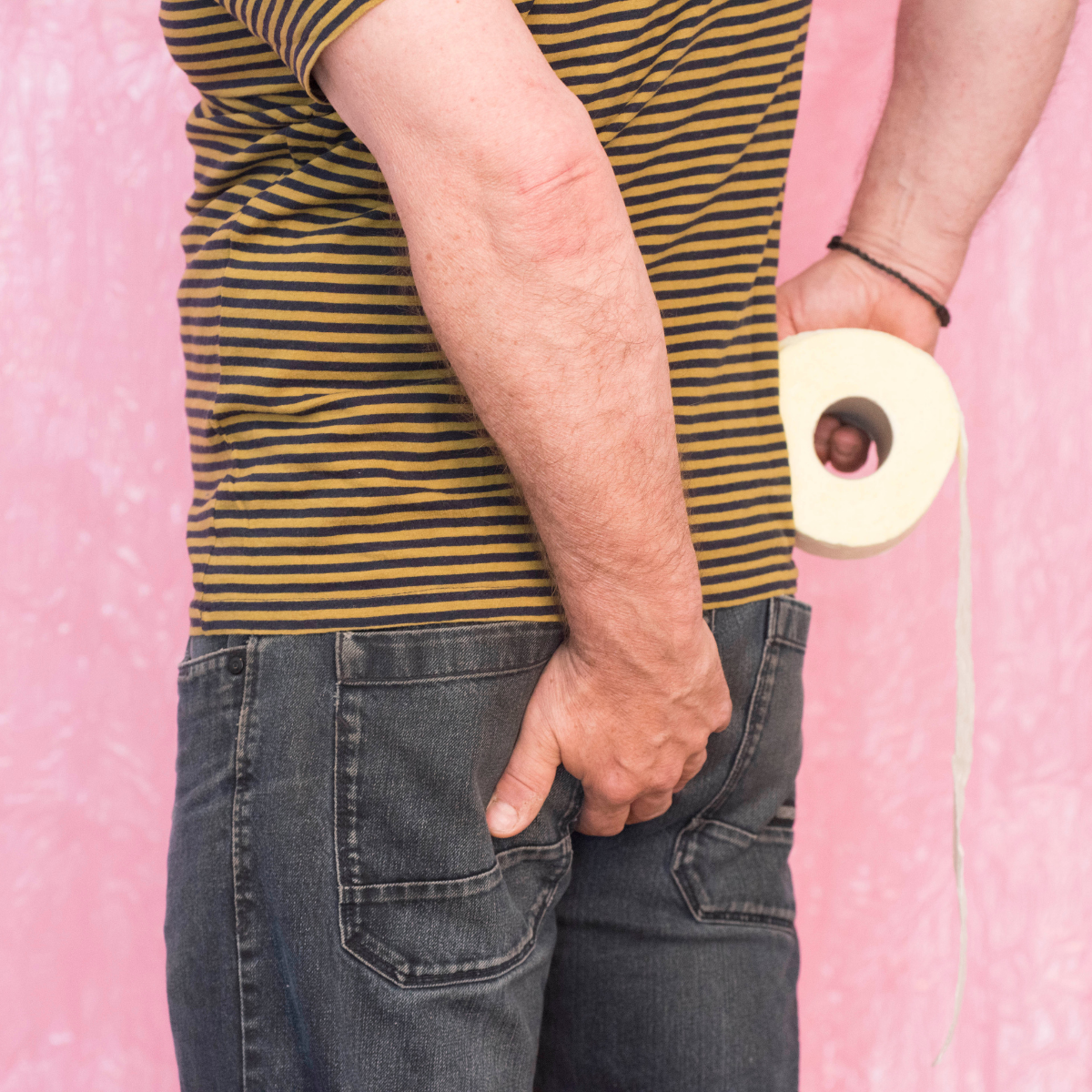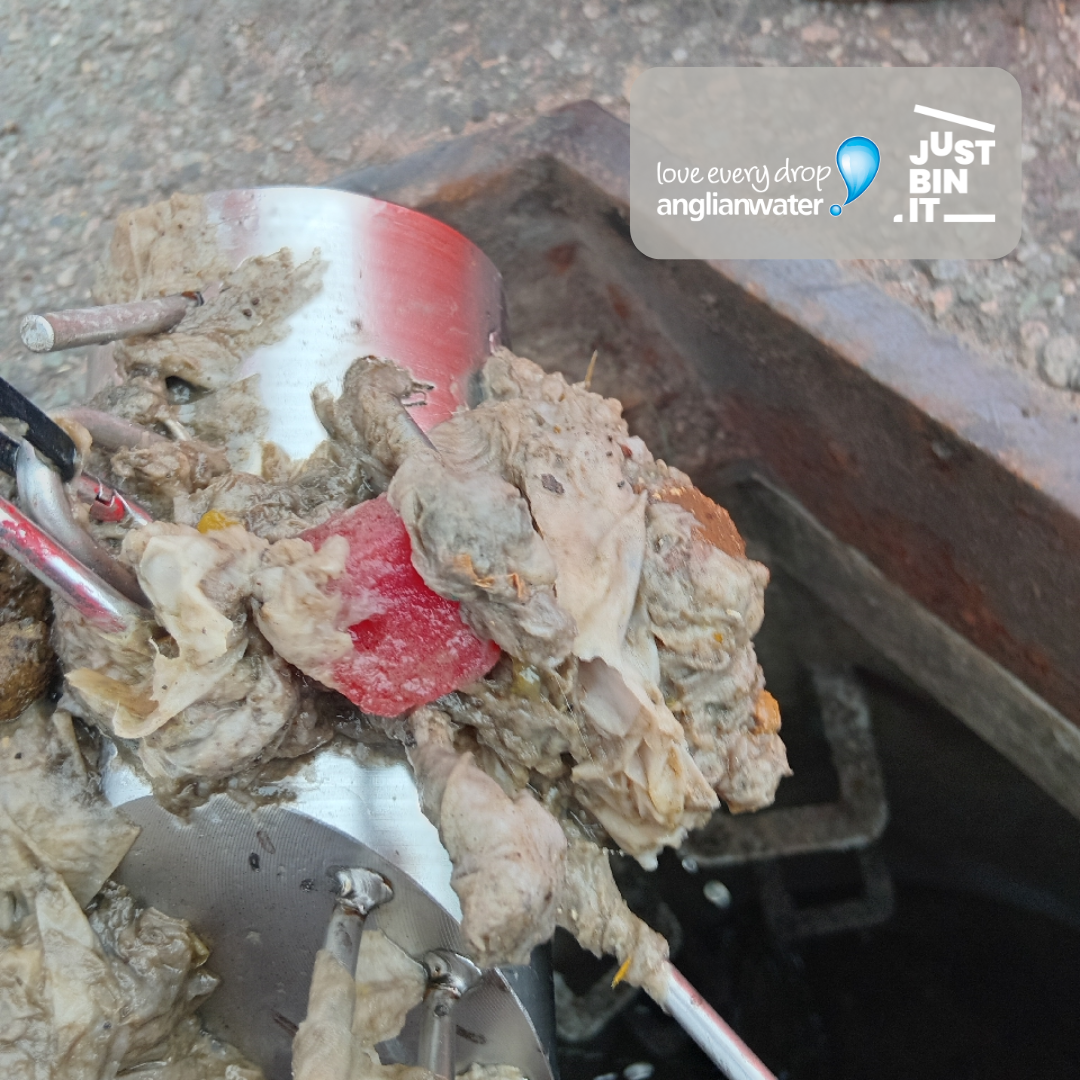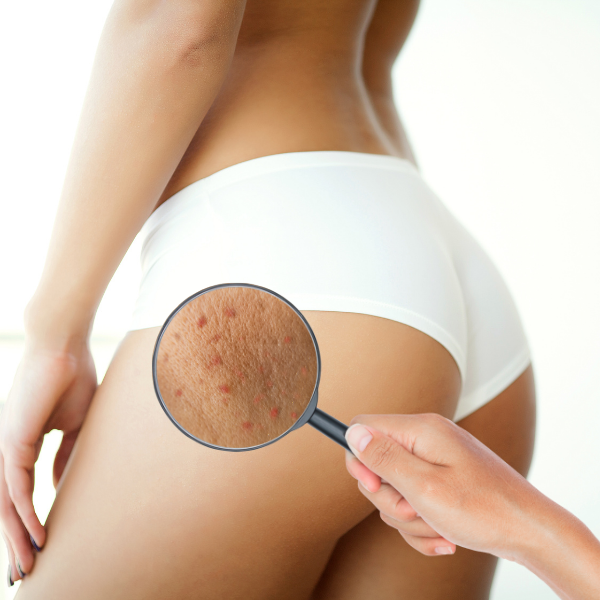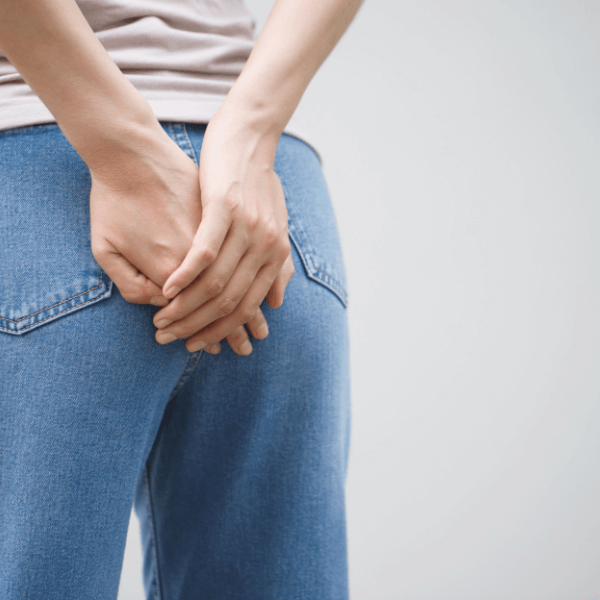Bummed Out? How to Tell If You've Got Haemorrhoids

Bummed Out? How to Tell If You've Got Haemorrhoids
Feeling off-beat below the belt can be unsettling, especially when you feel a bump down there and are left wondering, "is it the dreaded haemorrhoids?". It’s not an outlandish question, seeing as 80% of us experience haemorrhoids in our lifetimes.
Suddenly 'My Humps' by The Black Eyed Peas takes on a whole new meaning.
It's not only important to recognise the early signs and symptoms of piles, but also what they look and feel like too, so you can address them at the right time. From discomfort during bowel movements to noticing blood in the toilet, haemorrhoids can manifest in various ways.
Today, we're delving into what haemorrhoids look like, why they occur, the possible consequences if left untreated, and when it's time to seek support from a medical professional. We're here to shed some light on this common yet often misunderstood issue that resides in the dark corners and crevasses below the waist.
Spotting the Early Warnings
What are haemorrhoids?
Haemorrhoids, also known as piles, are a bit like the potholes on your neighbourhood street—unwanted, uncomfortable and ignored by the local council unless they’re causing someone harm.
They're swollen veins in your rectum or anus that can be as small as a pea or as large as a grape. Imagine your veins throwing a bit of a tantrum due to pressure, and voila, you've got yourself a haemorrhoid.
They come in two varieties: internal, hiding out of sight inside the rectum, and external, which hang out under the skin around the anus. Some people might not even realise they have them until they start to feel the discomfort or spot that something's amiss in the behind-the-scenes department. Simply put, haemorrhoids are your body's way of saying, "Hey, take it easy down there!"
Check out our blog on Haemorrhoids with Colorectal Surgeon, Dr James Kinross.
Early Indications of Haemorrhoids
The early signs of haemorrhoids can be different for everyone. You might feel a bit of itching or discomfort back there, perhaps after a particularly intense toilet session. Otherwise, you could experience a feeling of fullness, a kind of pressure that doesn’t seem to want to leave.
If you see a few spots of red on the toilet paper, that's a telltale sign your bum is crying out for help, so be sure to check that toilet paper after wiping. These symptoms are your backside’s way of waving a little red flag, signalling that it's time to pay attention to your posterior's plea for care. We don’t want to be swiping left on our bottom’s health profile, especially when we’re aiming for a pain-free future in the sitting department.
A Closer Look at Haemorrhoids
The Inside Scoop: What Do Haemorrhoids Look Like?
Curiosity might have killed the cat, but it can save your starfish. If you're wondering what haemorrhoids look like, picture a small, inflamed balloon popping up where the sun doesn't shine. They can be reddish, purplish, or even bluish, depending on your skin tone and the severity of the swelling.
Internal haemorrhoids are shy, staying hidden within the rectal cavity, but they can make their presence known during a bowel movement when they can pop out to say hello.
External haemorrhoids, on the other hand, are the extroverts at the networking event for as*holes, visible around the anus and feeling like soft lumps that can be tender to the touch. So, keep an eye out, because knowing what to look for is the first step in dealing with these pesky intruders.
Haemorrhoids: The Unseen Reality
It's easy to ignore what you can't see, and that's the tricky part with internal haemorrhoids—they're the stealthy kind. These internal issues lurk beneath the surface, out of sight within the rectal walls. You might not even know they're there until they start to make a fuss.
They can cause bleeding, usually noticeable as streaks of red on your toilet paper, or if they prolapse, they might feel like an uncomfortable, squishy protrusion during bowel movements. Think of them as hidden icebergs in the sea of your bowel; you only see the tip, but there's more going on underneath.
For these undercover agents, the evidence of their existence often comes in subtle hints rather than a full-blown show-and-tell. So, if there are signs like unusual bleeding or persistent discomfort, it's time to contemplate what's happening in the hidden depths of your derrière.
Checking yourself for haemorrhoids
Stage 1: Suspicion of the sphincter
If you’ve noticed some blood on your toilet paper and coming face to face with your anus is a no-go, don’t worry, you can simply go and have a chat with your GP. This is a sure and fast way to get the answers you need and put backside worries to the back of your mind.
When at the doctor, they’ll be able to take a look and see what’s going on back there. This may just be an inspection of the external skin, or it could be an internal inspection where your doctor wears gloves and feels just inside the back entrance. Either way, this is nothing to be worried about.
Stage 2: Through the looking gl-ass
If you’d rather make sure you know what’s going on down there before seeing a medical professional, taking a mirror to your nethers is an option too. Here’s some help on how to look at your butthole with a mirror.
Obviously, we don’t all have the level of mobility to look at those hard-to-reach places with a mirror, so a great alternative is snapping a shot with your phone. This will help you to inspect the area, being able to use the zoom feature helps too!
Just make sure to keep it in a private place on your phone, nobody wants to be showing a colleague a picture of their dog and ending up showing a picture of their starfish.
If you're brave enough to look, images of haemorrhoids can offer a crystal-clear understanding of what's happening back there.
These photos often show external haemorrhoids as puffy, reddened areas around the anus, sometimes looking like a little grape cluster. As for internal haemorrhoids, medical diagrams can illustrate how they bulge out from the rectum's inner lining.
Remember, though, pictures on the internet can range from common cases to extreme examples, so don't diagnose yourself based on a Google search or a WebMD deep dive alone.
Stage 3: Hooked on a feeling
Another option is to take a clean hand to your backside, preferably after showering, to have a feel around. If you have a haemorrhoid, you may feel a small lump on the edge of your anus. However, this isn’t always obvious. A thrombosed haemorrhoid will feel like a hard, painful lump and may appear bluish due to the trapped blood.
If you’ve gone through this process and found something out of the ordinary, be sure to refer back to stage 1 and have a quick chat with your doctor. That’s the best way to get the answers and support that you need.
Untreated Haemorrhoids: The Later Stages
Ignorance Isn't Always Bliss: Neglected Haemorrhoids
Turning a blind eye to haemorrhoids can end up being a pain in the a*s, literally. When left unattended, these pesky problems can escalate from minor nuisances to major issues. Without proper treatment, haemorrhoids can grow larger, become more painful, and even lead to complications like thrombosis, where a blood clot forms in the haemorrhoid. This can cause an excruciating pain that's about as enjoyable as sitting on a cactus.
In severe cases, chronic blood loss from untreated haemorrhoids can lead to anaemia, making you feel as if you've run a marathon that you never signed up for. In essence, neglecting haemorrhoids means you're gambling with your health, and the house always wins. So, don't let ignorance lead to a sore sit-down; tackle the issue before it becomes a bigger pain in the butt.
Late-Stage Signals: When to do something about haemorrhoids
When your haemorrhoids start behaving like they own the place, it’s time to take back control. Late-stage signals include intense pain, especially during bowel movements, that might negatively affect your relationship with toilet time.
If you're experiencing significant bleeding, enough to change the water in the toilet bowl red, it's a sign that your haemorrhoids are crying out for attention. If you've got haemorrhoids that are persistently prolapsing, meaning they're sticking out and not retreating like a shy turtle, that's another cue to seek support.
These symptoms are your body's way of saying “Hey, it’s time to bite the bullet and chat to your GP”. So, keep calm but don't carry on—get those haemorrhoids checked out.
When to Seek Support
Getting comfortable: Speak to yourself first
Before we seek help from anyone else, we should all aim to be more comfortable with our backsides. Learning to love takes time, and it’s no different when it comes to our tushies. Not being afraid to take a mirror to an uncomfortable angle could save you a lot of unwanted hassle. When your butt hole is someone who you can look in the eye with confidence, you’ll feel much more comfortable seeking advice from friends, family and medical professionals.
Remember, if you can’t love your starfish, how in the hell are you gonna get support when you need it most?...or something of that nature.
Crossing the Line: When Home Remedies Aren't Enough
There comes a time when the trusty old home remedies and over-the-counter creams just don't cut it anymore. If you've been relying on warm baths, witch hazel, and other remedies without seeing any improvement, it might be time to draw the line.
Persistent pain, significant bleeding, or any signs of infection—like fever or severe swelling—signal that your DIY treatments are like bringing a heater to the ice cream shop. And let's not forget the quality of life; if haemorrhoids are making your day-to-day activities feel like an uphill battle, it's worth seeking a professional opinion.
This is also true if you notice any changes in bowel habits or if the symptoms have been hanging around longer than a week. Remember, your healthcare provider isn't there to judge your backside but to help you find relief and get back to your comfortable, haemorrhoid-free life.
Sorting the piling cabinet: Haemorrhoids Roundup
Haemorrhoids can be tedious, and at their worse, quite nasty for our bottom health. Hopefully, knowing the steps we can take when we experience piles will help us better care for our backsides. A big part of this is getting used to checking in with our tushies, so when in doubt, why not take a look?
When things go awry below the waist, you can also make sure you’re cleaning up gently yet effectively in the toilet. Using dry toilet paper alone can cause more irritation on an already sensitive area, so using something to make that process a bit easier is beneficial.
Wype uses cooling aloe vera to keep things nice and soothed down there. It’s also an anti-inflammatory, adding to its soothing properties when things are a bit sore below the waist.
If you’re experiencing backside irritation, why not try the Wype Starter Kit to keep things cool, calm and collected when life gets a bit messy?



Thank you for this product and the clear description of it.
All your articles are really informative and so clearly written and really well received thank you.
It’s brilliant and sensible and great to use for everyone and for anyone with or helping someone with any health problem or disability to keep clean and healthy between showers/baths it’s such a brilliant invention.
Yes we all know you can use water but water on toilet paper just is a nightmare!!
And for those people saying use a face cloth 😱 really???? Who does your washing you mingers.
Please reply to the ignorant idiots who are never going to buy your product as they cannot understand why wet wipes are a problem to just get stuffed or sod off or even please, be really really rude to them. I didn’t realise just how idiotic some people can be!!! Hopefully and this is being really nasty these idiots will get piles, sores, lice and flea infested bum rot !!!
I needed to just have a moan after reading some of the comments.
My and my husband’s bottom thanks you and the inventors of Wype xx
Thank you for the clear description of piles and when to seek help.
After 1000s of years, finally a company that know how to communicate about bum health x
Really good overview of the symptoms, causes, treatment and prevention of haemorrhoids. Great advice on how to check them yourself at home – and to identify any home remedies. Happy haemorrhoids treating
You publish excellent articles. Very informative and often reassuring
I have just started using Wype. I find it really soothing. I will not go back to dry toilet paper. Thankyou